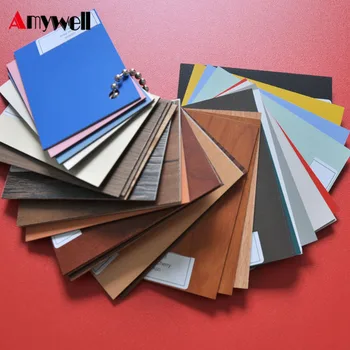
Primer Most primers will adhere to the Formica allowing you to use any paint over the primer. Select a heavy duty, mildew resistance primer for high grease areas such as a kitchen. Let the primer dry according to the manufacturer’s directions. Formica has such a slippery surface that paint has a hard time sticking to it.
The best ways to paint over Formica are to. Once you have your paint, apply coats of a primer , which will help the paint adhere to the countertops. By using a powerful primer designed to adhere to slick surfaces, you can prepare your Formica tabletop for painting, and can use the water-based paint of your choice as a topcoat. Primer is the key thing that will attach the paint with the Formica strongly. So you should be very much careful in priming well on the cabinet.
You will go for the second coat of primer after the first coat of priming if the first coat is not adequate. Common concerns when painting laminate furniture are:1. This will cause all your hard work and paint finish to scratch off easily long after your piece is complete.
Let the first coat of primer dry and then apply a second. When the second coat of primer is dry, paint over it with a couple of coats of latex satin or semi-gloss enamel, allowing each coat to dry before painting another. After the finish coat is dry, seal it with a couple of coats of clear acrylic. Exclusive To The Home Depot.
This paint is made to refinish Formica cabinets! Cabinets Formica Cabinets Melamine Cabinets Formica Countertops. Q Can cabinets made of Formica or other laminates be painted? A Yes, you can paint laminate cabinets, even in a hardworking room such as a kitchen.
Or you can skip primer and use one of. To paint Formica and other laminate surfaces, sand the Formica , then apply a primer or paint designed to adhere to smooth surfaces, and seal the paint with high-gloss acrylic sealant. Once it is waxed and cure it is as resistant to scratches as a regular painted surface.
I gave my pieces a light sanding before I started but there is no need for a primer. I think laminate is a correct term or melamine. Formica was the stuff they used on kitchen counters for decades-it is a brand name and is still available. Cover the countertop in a high-adhesive, oil-based primer using a smooth roller.
Allow it to dry completely before proceeding. Latex stain-blocking primers work better on large areas and hold up better on exterior surfaces. Pigmented shellac primer works well to block smoke and soot damage as well as to block animal urine smells.
Shiny Surfaces Bonding primers will stick to glass, tile, formica and previously painted surfaces. Use bonding primers for interior surfaces. To paint laminate cabinets, start by removing the hardware, cleaning the surface, and sanding the cabinets with medium-grit sandpaper until the surface feels smooth. Next, roll on a coat of bonding primer and let it dry completely.

Then, roll on 2-coats of paint, letting each coat dry completely before adding a new one. An inexpensive, if laborious, alternative to replacing or refacing cabinets. Allow two or three days for the primer to cure before. Painting Over Plastic Laminate. The next key step was to prime all the surfaces.
I used Kilz Primer , which blocks, seals, and preps the surface to which the paint will adhere. I agree about the cleaning. Wipe the doors with a tack cloth to remove any dust left behind before you move on. Open the can of primer , and apply it to the cabinet door using a sponge roller for the best application. You can do the edges using a paint brush.

For this project, a 220-grit was used for this step. With new primer everything is possible! Prep the formica by applying primer. Pour your primer into a container and start rolling it on. Thinner coats are better because they help to make the painted formica look much smoother.
Apply thin coats to start. Allow the primer to dry for a few hours or as long as is necessary. Sand the primered formica. The primer may leave some bubbles or.
If the area is going to be subjected to a lot of water such as the tile in the tub area, use BIN an alcohol base primer for maximum durability. Clean countertops with a degreaser (I used Krud Kutter) 2. Lightly sand countertops (I used a sponge sander) 3. Use this time to fill any deep nicks or scratches with a good-quality wood filler. Coat the surface with a quality primer so the finish paint can adhere to the surface. Whether your countertop is formica or laminate,.
Epoxy coatings require this coating to ensure a durable finish, but you can also use a primer labeled for use on shiny surfaces like laminate. Once the countertop is primed and dry, mix the epoxy. Use KILZ Adhesion where ensuring a secure bond is critical in situations when performance of a traditional water or oil-base primer may be questionable.
No comments:
Post a Comment
Note: Only a member of this blog may post a comment.